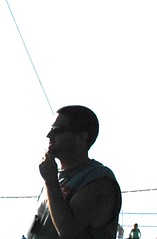
“Even though we live in the Information age, where ever increasing masses of data are at our disposal, we often struggle to understand what the data means.”
Describing Business Intelligence’s goals are three main items -
• “Making better decisions faster
• Converting data into information
• Using a rational approach to management
Making better decisions means improving any or all parts of the process; this also results in fewer poor decisions and more superior ones.”
It also seeks to analyze actions “resulting in progress towards company objectives.” Business who move too slowly “will lose out to their quicker rivals. There is a need to make not only better decisions but also better decisions faster.” In addition the “negative consequences of no information or old information can be huge” such as loosing customers or continuing to produce a product that no one wants.
Converting data into information” is a component of BI, the gap between large amounts of data and actual useful information is termed “the analysis gap.” Raw data which may be measured in gigabytes, terabytes and so forth needs to be processed to deliver information in “ relevant subsets instantly” in a form which people can relate to – “some call this ‘analysis at the speed of thought”.
Technology may be considered “a baseline definition of Business Intelligence, but this is “too narrow of a view” according to one author (Vitt, E., Luckevich, M. & Misner, S. (2002). “Understanding Business Intelligence.” In Business Intelligence. (Chap. 1). Microsoft Press. pp. 13-27.)“Often the hardest aspect of business intelligence is useful and relevant to a decision, such metrics are termed “key performance indicators (KPIs)… With advancements in e-commerce, business-to-business (B2B) and business-to-consumer (B2C) transactional systems, business intelligence is increasingly about delivering actionable information to people outside the organization – often as a revenue source.”
A rational approach to management can be characterized as:
• Seeking “measurable quantitative facts”,
• “organized methods and technologies to analyze the facts”,
• “inventing and sharing models that explain cause and relationships”,
• “experimenting with alternative approaches”,
• “understanding that people are not always rational”, and
• “running the business based on these characteristics.”
To me in all of the reading which explains the Business Intelligence model, this is the most key information being introduced. We can become educated on these business intelligence practices; we have known people who have astounding qualities and facilities of analysis and the ability to extrapolate beyond the data to its implications. But the key issue remains that we are people dealing with people’s needs, desires and wants. Both in business and in business analysis we need to remember what we are dealing with and for whom – so the closer we can get to allowing people to cleverly munge their own data, the closer we really come to real Business Intelligence, because the business of business is people.
Defining the BI cycle is “more than a attitude or enabling technology; in fact, it is a performance management frameworks, an ongoing cycle by which companies set their goals, analyze their process, gain insight, take action, measure their success,” and iterate. We call this progression – the BI cycle.”
Analysis is a filtering based on “our basic understandings and assumptions of how our business operates”, and as such can be referred to as a “mental model” or “tribal wisdom” and it can be a vision of what the business views as their goals.
Business Intelligence “systems that support freestyle analysis can help … break through the limits of … current mental models and even conceptualize new ones.” Step one of the BI cycle is to ask and answer many questions rapidly both the conventional and the unconventional. That is what real analysis is – the freedom to be curious and ask lots of really stupid questions until you ask a brilliant one.” Unfortunately in the real world not many business process analysts have a quality education, or a spontaneous or creative mind, so in the past in my own experience I have witnessed companies being lead down a garden path where there was no garden, and then cornered -- left without choices they made the only one presented, a bad one, which resulted in failure for both companies. Spontaneous reasoning, creative insight, and modeling using the open techniques described here could have resulted in more insightful investigations.
Even brainstorming has its uses in visualizing various aspects of business process analysis. “An insight is not always accepted because it is brilliant or even correct.” This being true what are the things that drive change into businesses and business modeling? – it appears to be time and success and failure. Sometimes stunning failure can be the only way for members of a company or unit to understand the results of their poor practices and decision making practices or lack thereof.
This brings us right to measurement – “key performance indicators” are fancy words for how you know you are right. Measurement is what keeps the iterative practices pointed in the right directions.
Moore’s Law corollary is that the computing power of microprocessors doubles ever 18 months but prices remain constant. For BI this means massive calculation power is increasing, and with the increase comes the ability to visual data in new and exciting ways. “The greater the quantity of data, the more certain the analysis and conclusion are correct.” This statement is humbled by two others,
1. Dirty data (quality of data), and so …
2. Asking the right questions.
By entering the “era of Information Democracy” we can hope that the privately funded research which may not have reached the right audiences does come out from behind the iron curtain of the Information Cold War, where companies zealous guard their research so that they make the profits they deserve based on their hard work – which unfortunately may mean that more friends like my friend Laura, who died of cancer two days ago in Fairbanks, Alaska will continue to die.
I am not suggesting that if "Sir Isaac Newton had observed more apples falling, he would have developed his laws of gravity sooner” because not many people were immediately and directly affected by his scientific statement of them, but in our case the potential good for data sharing of certain types is beginning to outweigh the relatively minor issue of money.
Even small businesses may soon not be able to navigate by dead reckoning any more if they could more easily afford some kind of Business Intelligence. Larger companies can afford more encouragement of “experimenting and tolerating good try failures” than smaller firms can.
To conclude, business intelligence is logical, communication, and analysis done in a timely manner to promote and provide for business needs, in a clear, rational and open way, using whatever tools are available to the practitioners, even if they are manual. There are many things that we are “dying to know” and I hope those needs will be met for ethical reasons if for no others.
Business Intelligence
Vitt, E., Luckevich, M. & Misner, S. (2002). “Understanding Business Intelligence.” In Business Intelligence. (Chap. 1). Microsoft Press. pp. 13-27.
Vitt, E., Luckevich, M. & Misner, S. (2002). ”Defining BI Technologies.” In Business Intelligence. (Chap. 3). Microsoft Press. pp. 49-63.
Vitt, E., Luckevich, M. & Misner, S. (2002). “Implementing a BI Solution.” In Business Intelligence. (Chap. 10). Microsoft Press. pp. 145-177.
Whiting, Rich, “Search and Business Intelligence: Complementary Tools,” Information Week, March 6. 2006. Accessed on 3/14/2006 from http://www.informationweek.com/story/showArticle.jhtml?articleID=181500684
Information Lifecycle
Goodwin, Phil. "Information Life-Cycle Management and Enterprise Content Management: The Confluence of Technology and Business." (2-18-2004) Accessed on 3/24/2006 from http://www.documentum.ru/pdf/analytics/reviews_meta_ILM_ECM.pdf.
Information Assessment
Outsell, Inc. “Information Management Best Practices: 2006 Product Satisfaction Scorecard – A Tool For Making Portfolio Choices,” InfoAboutInfo Briefing,Volume 9, February 10, 2006.
Knowledge Creation, Capture and Collections
Davenport , Thomas H., Thomas, Robert J. and Desouza, Kevin C., “Reusing Intellectual Assets,” Industrial Management, 4 (3), 2003, pp. 12-17.
Desouza, Kevin C., and Awazu, Yukika, “Maintaining Knowledge Management Systems: A Strategic Imperative,” Journal of the American Society for Information Science and Technology, 56 (7), 2005, pp. 765-768.
Supplemental Readings
Business Intelligence
Vitt, E., Luckevich, M. & Misner, S. (2002). “Identifying BI Opportunities.” In Business Intelligence. (Chap. 9). Microsoft Press. pp. 113-143.
Whiting, Rich, “BI Spending to Increase,” Information Week, March 6. 2006. Accessed on 3/14/2006 from http://www.informationweek.com/story/showArticle.jhtml?articleID=181500685.
Information Lifecycle
Horton, F. Woody. "Government Information Life Cycle Management: The Mission, the Needs, the Operational Requirements, the Roles." (10-13-2002) Accessed on 3/24/2006 from http://www.nclis.gov/govt/assess/assess.appen16.pdf.
Knowledge Creation, Capture and Collections
Awazu, Yukika and Desouza, Kevin C., “Open Knowledge Management: Lessons from the Open Source Revolution,” Journal of the American Society for Information Science and Technology, 55(11), 2004, pp. 1016-1019.
Reflection Paper Week 4:
Information Sources, Quality & Presentation
For Lee Dirks
520b
University of Washington iSchool
April 18, 2007
Liz Vitt (Intellimentum) spoke to the class on April 20, 2007. How do you know the data you are recieving is even reliable - data integrity.
Key term from Phil Fawcett (Microsoft) on "optimized applications"
http://research.microsoft.com/ivm/HDView/HDGigapixel.htmTechnologyVentres - from Idea to Enterprise
Richard C. Dorf
Thomas H. Byers
 The question posed was how do you design and develop in highly secure corporate settings, are there standards? what do you do when the corporate environment makes it too difficult to meet these standards?
The question posed was how do you design and develop in highly secure corporate settings, are there standards? what do you do when the corporate environment makes it too difficult to meet these standards?














